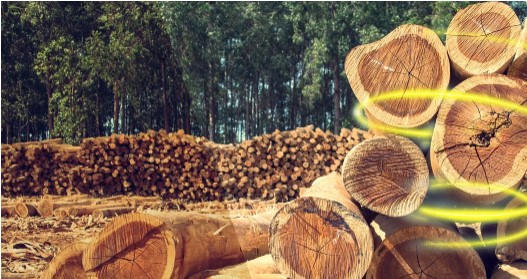Someday Soon Your Wood May Not Come from a Mill
Originally Published by: Interesting Engineering — December 19, 2022
SBCA appreciates your input; please email us if you have any comments or corrections to this article.
Stop cutting trees! Will this slogan remain a slogan forever? We have been slaughtering trees as if they grow in a day and as if they are unlimited in number.

Lab-grown wood.
A global forest survey reveals that since the beginning of human civilization, we have already wiped out 54 percent of the total tree population on Earth, although it is common knowledge that uncontrolled deforestation is one of the main causes of frequent heat waves, droughts, and tsunamis.
We still cut trees in large numbers on a daily basis for making products like paper, wax, medicines, rubber, and furniture. Some of these products are so basic to our lifestyle that we can not imagine our lives without them.
So does that mean we’ll keep cutting trees to fulfill our desires?
Well, not anymore. All thanks to a groundbreaking innovation that we reported in May 2022. A study published then in the journal Materials Today shed light on the world’s first 3D-printed lab-grown wood. By the means of this research, the scientist at MIT demonstrated that deforestation is longer needed to produce timber.
Producing furniture without cutting trees
The study authors created customizable wood in their lab from the cells of a flowering plant known as Zinnia elegans, popularly referred to as common zinnia. They claimed their novel approach allowed them to bio-print wooden pieces of any shape and size. This means that if you need a wooden table, you can directly produce a wooden table from the cells.
So no deforestation and no wastage, like what happens in the case of traditional furniture. This was achieved by treating common zinnia cells first with a liquid medium and then with a gel solution. The latter comprised hormones and nutrients.
By changing the concentration of these hormones, the researchers could control the stiffness, strength, density, and various other physical and mechanical properties of the lab-grown plant matter.
While highlighting the significance of their research work, the authors wrote in their paper, “(Our) recent work proposed a novel approach to generate 3D-printed, tunable plant materials from cell cultures with the potential to reduce waste, increase yields and production rates, and reduce environmental disruption as cultures are generated from a non-sacrificial plant sample rather than whole plants.”
This is just a humble beginning
After completing her research work at MIT, lead author Ashley Beckwith founded a company named FORAY bioscience to further develop new techniques and methods for growing wood without cutting trees. The current approach that involves growing plant matter from common zinnia cells is just the first step in this direction.
It is also the first-of-its-kind method that employs tissue engineering for producing plant matter in a lab. Until now, scientists have used this method for only animal cell culture.
“Analogous concepts have not been translated to the plant culture space, particularly with respect to the production of materials. This work thus represents a first look at a cellular agriculture approach to plant material generation,” the researchers note in their study.
Beckwith and her team are now planning to 3D print timber in a lab from cells of trees like pine. Once this happens, deforestation would surely become a thing of the past.
